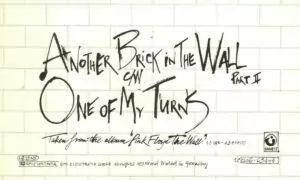By Maahwish Mirza

✅ AI Essay Writer ✅ AI Detector ✅ Plagchecker ✅ Paraphraser
✅ Summarizer ✅ Citation Generator
The emergence of the English Defence League, attacks motivated by a far-right ideology in Norway, and a controversial denunciation by Prime Minister David Cameron earlier this year have kept debates on multiculturalism alive and raging. In a post 9/11 world faced with the consequences of globalisation, Ali Rattansi explores the Clash of Civilizations theory and the nature of multiculturalism in modern Europe.
This is a complex issue, and simplistic terminology or essentialist views can transform the multiculturalism debate into empty, but potentially harmful, rhetoric. Multiculturalism is difficult to define, because recent political discourse has offered contradictory and paradoxical definitions. The identification of multiculturalism as a divisive philosophy that encourages people to lead parallel, separate lives is incorrect, however. Rattansi uses several cases, including the Brixton and Bradford riots, usually upheld as an example of ethnic strife, to demonstrate that multiculturalism is the meshing and mixing of cultures and not the creation of various distinct microcosms within one cosmopolitan state. What is needed to counteract the possibility of segregated communities is more multiculturalism, argues Rattansi, and he shows that the creation of ethnic or cultural hubs within Britain may have more to do with racial discrimination during the time of industrial immigration rather than simply an anti-integration sentiment on the part of minority communities.
Multiculturalism is a contentious topic and Rattansi addresses the key issues that should be debated in any discussion of multiculturalism: definitions, ‘integration’, ‘community cohesion’, identity, ‘parallel lives’, belonging, and loyalty. Prime Minister David Cameron and German Chancellor Angela Merkel’s comments proclaiming multiculturalism to be ‘dead’ can be dangerous, misleading, and too simplistic in a debate that has repercussions for community relations and can fuel anti-immigrant or anti-minority sentiments and movements. Governmental policy can determine the nature of ‘community relations’ and a French-style refusal to acknowledge, accept, and promote multiculturalism can lead to the very segregation that is used to attack the idea of multiculturalism.
Adding to the complexity of the debate are the issues of ‘integration’ and identity. Rattansi identifies this as a vague notion, with attempts by various politicians including Gordon Brown, Tony Blair, and David Cameron to articulate a vision of ‘Britishness’ for immigrants or second-generation immigrants to subscribe to and thus demonstrate ‘integration’. Democracy, tolerance, and equality are ‘core values’ that are frequently cited as the cornerstones of a British way of life, but as Rattansi points out, these values are vague, simplistic, and not exclusive to Britain, and—especially historically speaking—have not always acted as the uniting undercurrent of British life. To talk of such values as definitive of and somehow exclusive to Britain may encourage a ‘them’ and ‘us’ outlook, especially when looking at what Rattansi calls the ‘Muslim question’. When looked at through the narrow prism of essentialism, the question of whether or not a reconciliation between ‘clashing’ Islamic philosophies and liberal democratic values can ever occur arises. Debates within multiculturalism can be steeped in essentialist terms with the effect of caricaturing cultures with narrow perceptions and stereotypes. The mixing of cultures is not unachievable and multiculturalism’s project is not to cater for the existence of ‘parallel lives’.
Notions of identity also complicate issues and ethnic integration ‘tests’ are again far too simplistic to assess attitudes. True integration cannot mean passing Lord Tebbit’s infamous ‘Cricket Test’ or adhering to David Blunkett’s belief that English must be spoken in the home. The identity of second or third generation immigrants can be multi-layered and multi-faceted, reflected by phrases of identification such as ‘British-Asian’ that demonstrate the possibility of new identities emerging. Questions of integration can again be dangerous, patronising, or offensive to ask, as if there is a scale of loyalty that minorities must place themselves on and may be seen as denying immediate identification as ‘British’ to certain citizens.
Rattansi’s book is fundamental to gaining an understanding of the fluctuations and difficulties of the multiculturalism debate. It explores in concise form the nature of multiculturalism as a feature of modernity. Rattansi concludes that we are progressing from ‘multiculturalism’—though this does not mean that multiculturalism has necessarily failed—towards ‘interculturalism’, where a meshing of cultures is the next natural step. Governmental action is necessary to overcoming societal fragmentation, but this must be as bottom-up as it is top-down, and interculturalism, Rattansi argues, will displace Huntingdon’s Clash of Civilisations theory in an increasingly globalised world.
—————-
Written under a Creative Commons License, with edits: https://creativecommons.org/licenses/by/1.0/
Follow us on Reddit for more insights and updates.




Comments (0)
Welcome to A*Help comments!
We’re all about debate and discussion at A*Help.
We value the diverse opinions of users, so you may find points of view that you don’t agree with. And that’s cool. However, there are certain things we’re not OK with: attempts to manipulate our data in any way, for example, or the posting of discriminative, offensive, hateful, or disparaging material.